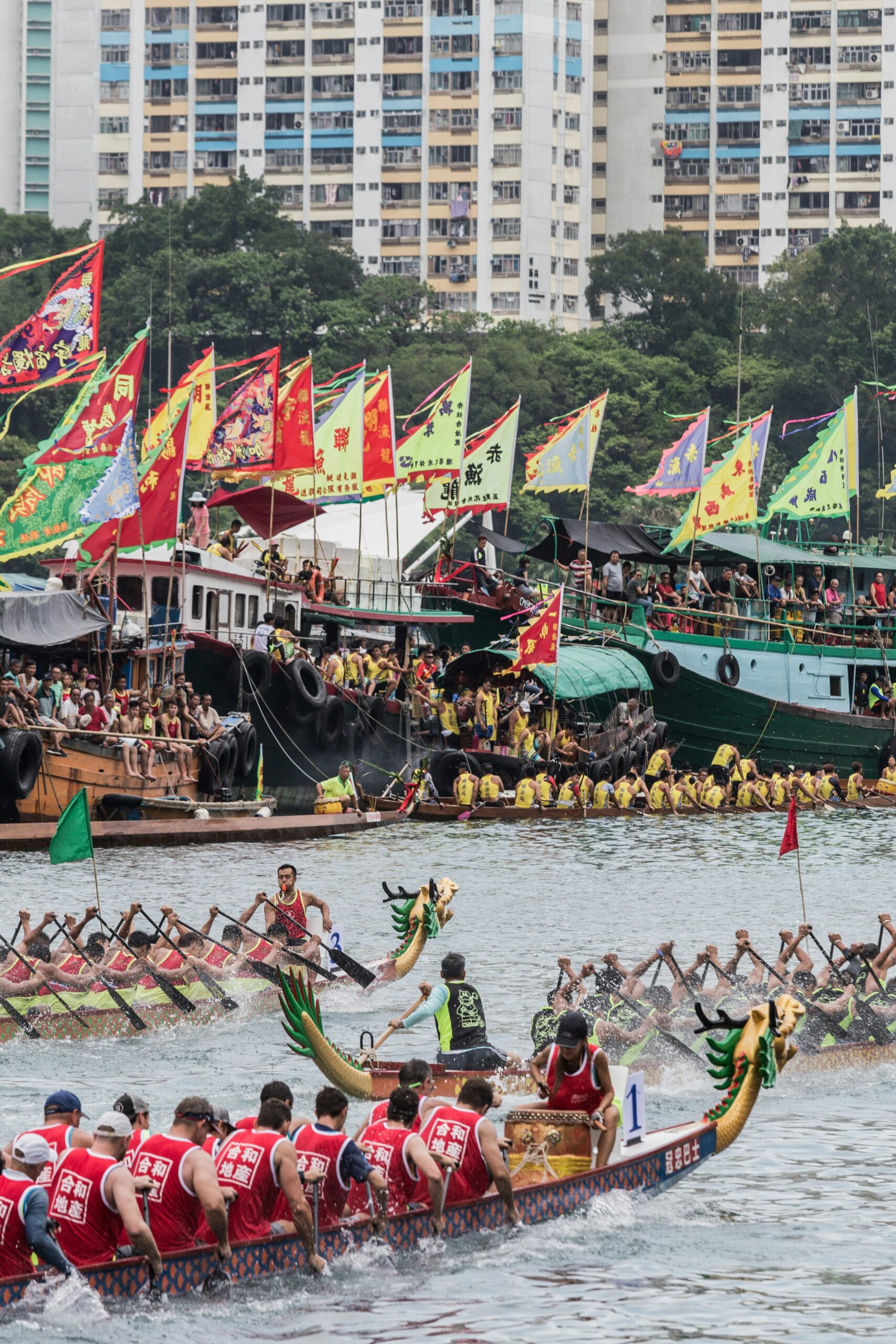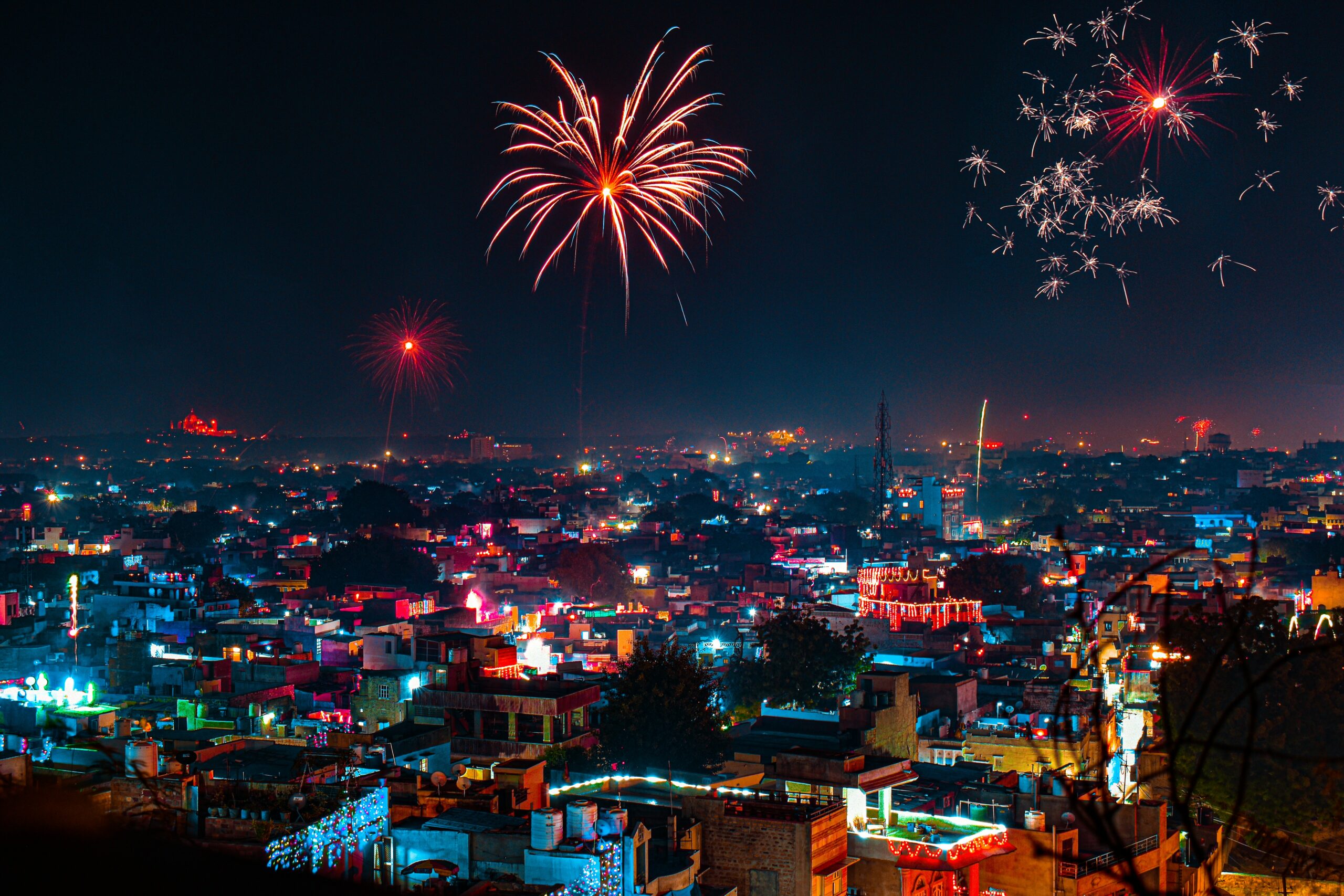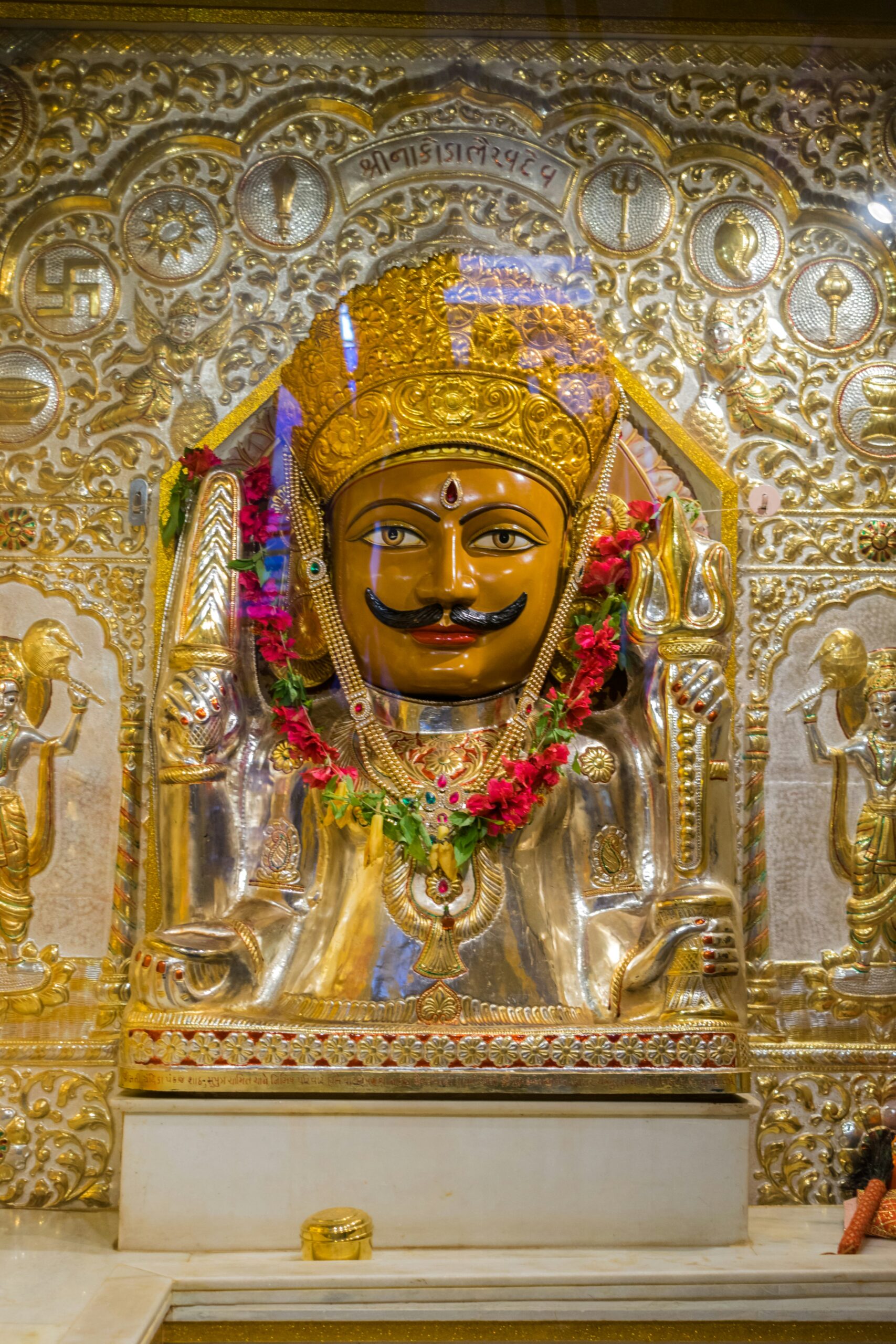
Introduction to the Dragon Boat Festival
The Dragon Boat Festival, known as Duanwu Jie (端午节) in Chinese, is a traditional holiday that has been celebrated for over two millennia. This annual event occurs on the fifth day of the fifth month of the Chinese lunar calendar, typically falling in late May or early June. Renowned for its vibrant dragon boat races and the preparation of zongzi—a type of sticky rice dumpling wrapped in bamboo leaves—the festival holds a notable place in Chinese culture.
The Dragon Boat Festival commemorates the life and death of the esteemed Chinese poet and minister Qu Yuan (c. 340–278 BC). Qu Yuan was a loyal minister in the State of Chu during the Warring States period. According to legend, he drowned himself in the Miluo River to protest against the corruption and misgovernance of his homeland. In honor of his sacrifice, locals raced their boats to retrieve his body and threw rice into the water to appease the river dragons, thus preventing them from devouring Qu Yuan’s spirit. These actions are believed to be the origins of the festival’s most iconic traditions: dragon boat racing and the preparation of zongzi.
Beyond its historical roots, the Dragon Boat Festival is a time for family reunions and cultural rituals. People engage in various activities such as hanging up mugwort and calamus to ward off evil spirits, wearing perfumed medicine bags to protect against disease, and drinking realgar wine as a form of detox. Each of these customs is imbued with symbolic meaning, reflecting the festival’s deeper cultural significance and its enduring legacy in Chinese society.
As we explore further, we will delve into the rich tapestry of myths, traditions, and regional variations that make the Dragon Boat Festival a singular celebration. From its historical origins to contemporary practices, this blog post aims to provide a comprehensive understanding of one of China’s most cherished cultural festivals.
Historical Origins of the Dragon Boat Festival
The Dragon Boat Festival, known as Duanwu Jie in Mandarin, traces its roots back to ancient China, with its origins steeped in both legend and historical interpretations. Central to the festival’s inception is the revered poet and statesman Qu Yuan, who lived during the Warring States period (475–221 BCE). Qu Yuan served the state of Chu but fell out of favor with the court due to his unwavering loyalty and advocacy for political integrity. Devastated by the corruption and betrayal within the court, Qu Yuan eventually drowned himself in the Miluo River on the fifth day of the fifth lunar month, a date that is now synonymous with the Dragon Boat Festival.
Legend has it that upon learning of Qu Yuan’s death, the local villagers were overcome with sorrow. They rowed their boats out to the river to search for his body, beating drums and splashing the water with their paddles to ward off evil spirits. To prevent fish from consuming Qu Yuan’s body, they threw rice into the water as an offering. This act is believed to have evolved into the modern-day tradition of dragon boat racing and the preparation of zongzi, glutinous rice dumplings wrapped in bamboo leaves.
While the tale of Qu Yuan is the most widely accepted explanation of the Dragon Boat Festival’s origins, various historical interpretations suggest that the festival may predate Qu Yuan’s era. Some historians argue that the festival has its roots in ancient agrarian rituals, where dragon boat races were performed as a means to appease the river gods and ensure a bountiful harvest. These races were symbolic of the agricultural communities’ prayers for rain and protection from floods, reflecting the deep connection between the people and their natural environment.
Over time, the Dragon Boat Festival has evolved, blending elements of folklore, historical commemoration, and cultural practice. Despite these changes, the festival remains a vibrant and significant part of Chinese heritage, honoring the enduring spirit of Qu Yuan and the rich tapestry of traditions that have shaped its history.
Traditional Dragon Boat Races
Dragon boat races represent the heart of the Dragon Boat Festival, embodying both cultural heritage and communal spirit. The boats themselves are meticulously crafted, with designs that pay homage to ancient Chinese traditions. Typically, these boats are long and narrow, adorned with vibrant colors and intricate dragon motifs, symbolizing power and auspiciousness. Each dragon boat features a dragon head at the bow and a dragon tail at the stern, making the vessels not just functional but also visually captivating.
The dragon motif is deeply significant, reflecting ancient beliefs in dragons as benevolent, powerful creatures that control water and rainfall. This symbolism is particularly resonant during the festival, as it aligns with the agricultural calendar and the hopes for bountiful harvests. The integration of the dragon motif in these races underscores the cultural importance of dragons in Chinese mythology and their revered status in society.
The competitive spirit of the dragon boat races is palpable, drawing participants and spectators alike into a thrilling display of teamwork and endurance. Each boat is manned by a team of rowers, a drummer who sets the rowing pace, and a steerer who navigates the course. The rhythmic drumming and synchronized rowing create an electrifying atmosphere, as teams strive to outpace their rivals and claim victory. These races are not only a test of physical prowess but also of coordination and unity, reflecting the communal values intrinsic to the festival.
Organizing dragon boat races requires meticulous planning and coordination. Various regions in China, including Guangdong, Fujian, and Hong Kong, are known for their elaborate celebrations, each adding unique local flavors to the event. Internationally, countries such as Singapore, Malaysia, and Canada have embraced the tradition, hosting their own versions of the races, which fosters a global appreciation for this cultural spectacle. These international events often incorporate local customs and innovations, making each dragon boat race a distinctive celebration of cultural diversity and shared heritage.
The Symbolism of Zongzi
Zongzi, the traditional sticky rice dumplings central to the Dragon Boat Festival, hold profound cultural and historical significance. These pyramid-shaped parcels are typically made from glutinous rice and are often filled with a variety of ingredients such as red bean paste, dates, chestnuts, pork, and salted egg yolks. Wrapped meticulously in bamboo or reed leaves, zongzi are then boiled or steamed to perfection. The method and ingredients can vary significantly across different regions, reflecting local tastes and customs.
The origins of zongzi are deeply intertwined with the legend of Qu Yuan, a patriotic poet from the Warring States period. It is said that the local people threw zongzi into the river to prevent fish and evil spirits from consuming Qu Yuan’s body after he drowned himself out of despair for his country. Thus, zongzi serve as a symbol of remembrance and respect for Qu Yuan’s spirit, embodying values of loyalty and patriotism.
Beyond their historic roots, zongzi are also emblematic of familial unity and communal harmony. The preparation of zongzi is often a collective family activity, where members gather to share stories and bond over the intricate process. This tradition underscores the importance of familial connections and community cohesion, which are core values celebrated during the Dragon Boat Festival.
Making zongzi is an art that requires patience and skill. The process begins with soaking the glutinous rice and leaves. Next, the fillings are prepared, and the rice and fillings are layered within the leaves, which are then folded into their distinctive pyramid shape and secured with twine. The wrapped zongzi are then cooked, a process that can take several hours, allowing the flavors to meld and the rice to become delectably tender.
In essence, zongzi are more than just a festive delicacy; they are rich with cultural symbolism and historical resonance. They serve as a culinary bridge connecting past traditions with present-day celebrations, making them an indispensable part of the Dragon Boat Festival.
Other Festive Customs and Practices
The Dragon Boat Festival, celebrated on the fifth day of the fifth lunar month, encompasses a variety of customs that extend beyond the well-known dragon boat races and the consumption of zongzi. These traditions, deeply rooted in history and culture, reflect the festival’s rich tapestry of symbolic meanings and communal beliefs. Among these customs, the hanging of calamus and mugwort, the wearing of perfume pouches, and the practice of tying five-color silk threads hold particular significance.
Hanging up calamus and mugwort is a prevalent custom during the Dragon Boat Festival. These plants are believed to possess protective qualities that ward off evil spirits and harmful insects. Calamus, with its sword-like leaves, symbolizes strength and protection, while mugwort, known for its medicinal properties, is thought to purify the air and promote health. Families often hang these plants on their doors and windows to safeguard their homes and ensure a healthy environment.
Perfume pouches, or sachets, are another colorful tradition. These small, intricately embroidered bags are filled with aromatic herbs and spices, such as cloves, cinnamon, and dried citrus peel. Worn by both adults and children, these pouches serve a dual purpose: they are both decorative and believed to provide protection against disease and bad luck. The custom of wearing perfume pouches reflects the deep connection between fragrance, health, and fortune in Chinese culture.
The practice of tying five-color silk threads around the wrists and ankles is a custom imbued with symbolic meaning. The five colors—red, yellow, blue, white, and black—represent the five elements (wood, fire, earth, metal, and water) and are believed to balance energies and protect against evil. These threads are typically tied on children, who then wear them until the threads naturally fall off, symbolizing the shedding of misfortune and the gaining of luck and health.
These customs, each with its own unique origin and significance, contribute to the diverse and rich cultural landscape of the Dragon Boat Festival. They demonstrate the festival’s enduring appeal and its ability to bring communities together in a shared celebration of tradition, health, and prosperity.
Modern Celebrations and Adaptations
The Dragon Boat Festival, known as Duanwu Jie in Mandarin, has undergone significant transformations in contemporary times, influenced by urbanization and modernization. While the festival’s core traditions remain intact, there is a noticeable shift towards integrating modern elements that appeal to younger generations and urban dwellers. In many cities across China, the festival has evolved to include not just the traditional dragon boat races and zongzi (glutinous rice dumplings) but also a range of cultural performances, parades, and community events that reflect a blend of old and new.
One of the most visible changes is the scale and organization of dragon boat races. These races have become major sporting events, attracting international teams and substantial media coverage. The use of advanced boating equipment and safety measures has enhanced the competitiveness and appeal of the races, making them a highlight of the festival. Additionally, urban parks and waterfronts are often adorned with festive decorations, and large screens broadcast the races live, allowing spectators to engage with the event in real-time.
Moreover, modernization has led to the digitization of the Dragon Boat Festival. Social media platforms and mobile applications play a crucial role in promoting the festival, sharing historical facts, and organizing virtual events. Online tutorials for making zongzi and crafting DIY dragon boat models have gained popularity, enabling people to participate from the comfort of their homes. This digital shift not only preserves the cultural essence of the festival but also makes it accessible to a global audience.
Chinese communities around the world celebrate the Dragon Boat Festival with unique adaptations that reflect their local cultures. In Malaysia and Singapore, the festival is celebrated with a multicultural flair, incorporating local culinary flavors and performances. In North America and Europe, dragon boat races are often organized as part of multicultural festivals, fostering a sense of community and cultural exchange. These adaptations highlight the festival’s versatility and its ability to bring people together, transcending geographical and cultural boundaries.
Overall, the modern celebrations and adaptations of the Dragon Boat Festival demonstrate its enduring significance and its capacity to evolve while honoring its rich cultural heritage.
The Dragon Boat Festival, known as Duanwu Jie in Chinese, plays a pivotal role in preserving the rich tapestry of Chinese cultural heritage. As one of the oldest and most celebrated festivals in China, it serves as a living repository of traditional customs and practices that have been passed down through generations. The festival’s significance is underscored by its inclusion in UNESCO’s Intangible Cultural Heritage list, a testament to its enduring cultural value.
The preservation of traditional customs during the Dragon Boat Festival is multifaceted. One of the most iconic traditions is the dragon boat race, where ornately decorated boats, each representing a dragon, compete in a display of strength, teamwork, and community spirit. This tradition is more than a sporting event; it is a reenactment of ancient rituals that date back over 2,000 years, believed to honor the patriotic poet Qu Yuan. The preparation of zongzi, a type of sticky rice dumpling wrapped in bamboo leaves, is another time-honored custom. Families gather to prepare and enjoy these delicacies, fostering a sense of continuity and connection with their ancestors.
The Dragon Boat Festival’s inclusion in UNESCO’s Intangible Cultural Heritage list in 2009 highlights global recognition of its cultural importance. This designation not only acknowledges the festival’s historical significance but also emphasizes the need to preserve these practices for future generations. It brings international awareness and support for the efforts to maintain the festival’s authenticity amidst the rapid modernization of society.
Passing down these traditions to future generations is crucial for the survival of the Dragon Boat Festival. Educational programs, community activities, and media coverage play vital roles in this endeavor. Schools often organize cultural activities around the festival, teaching children about its history and customs. Communities come together to celebrate, reinforcing a shared cultural identity and promoting intergenerational learning. This collective effort ensures that the Dragon Boat Festival remains a vibrant and integral part of Chinese cultural heritage, continually enriching the lives of those who participate and ensuring its legacy for years to come.
Conclusion: The Enduring Spirit of the Dragon Boat Festival
The Dragon Boat Festival, steeped in centuries of tradition, remains a vibrant celebration of cultural heritage and community spirit. Throughout this blog post, we have explored the festival’s rich history, tracing its origins back to the legendary poet Qu Yuan, and delved into the multifaceted customs that define this annual event. From the exhilarating dragon boat races to the savory zongzi, each element of the festival encapsulates a unique aspect of Chinese culture, fostering a sense of identity and belonging among participants.
At its core, the Dragon Boat Festival is a testament to the enduring power of cultural traditions to unite people. It provides a platform for communities to come together, celebrate their shared heritage, and reinforce social bonds. The festival’s rituals and activities, passed down through generations, serve as a living link to the past, reminding us of the values and stories that have shaped our cultural landscape.
As we look to the future, the Dragon Boat Festival’s relevance remains undiminished. In a world that is rapidly changing and increasingly interconnected, such cultural celebrations play a crucial role in preserving our collective identity. They offer a sense of continuity amidst the flux, grounding us in our history while allowing us to embrace new influences and perspectives. The festival’s global spread, with dragon boat races now held in numerous countries, underscores its universal appeal and the shared human desire for connection and celebration.
The Dragon Boat Festival continues to be a vibrant and dynamic expression of cultural pride and community spirit. Its enduring popularity is a testament to the resilience of cultural traditions and their capacity to adapt and thrive in contemporary society. As we honor the past and celebrate the present, the festival’s future looks bright, promising to inspire and unite people for generations to come.


